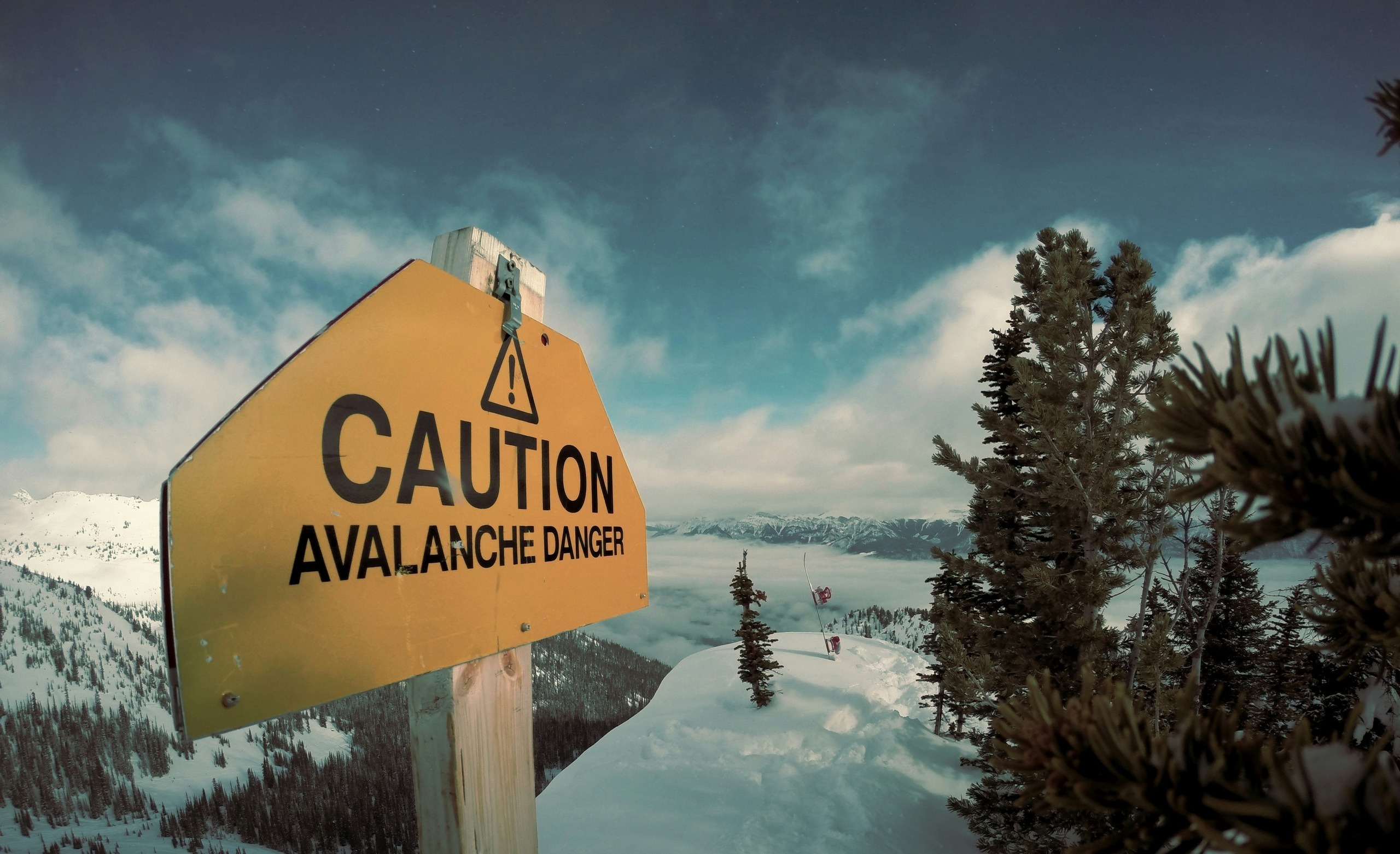
Surviving In An Avalanche
In this blog post, we will delve into the gripping world of surviving in an avalanche, from understanding how they happen to learning essential techniques to escape their deadly grasp. Picture yourself surrounded by a pristine winter wonderland, the crisp air filling your lungs as you carve through fresh powder on a majestic mountainside.
But amidst this breathtaking beauty lies a silent threat – avalanches. These powerful forces of nature have the potential to turn a peaceful day in the snow into a fight for survival. So grab your gear and get ready for an adrenaline-pumping journey through snow-covered slopes and life-saving strategies!
Understanding Avalanches
Avalanches are powerful and unpredictable phenomena that can occur in mountainous regions around the world. These natural disasters are essentially large masses of snow, ice, and debris sliding down a mountainside at high speeds. The trigger for an avalanche can vary, ranging from human activity like skiing or snowboarding to environmental factors such as heavy snowfall or rapid temperature changes.
When it comes to understanding how avalanches happen, it’s crucial to consider the different types that exist. Slab avalanches, for instance, involve a cohesive layer of snow breaking loose and sliding downhill as a single unit. On the other hand, loose-snow avalanches consist of individual particles of snow cascading down the slope together.
Factors like slope angle, snowpack stability, weather conditions, and terrain features all play a role in determining the likelihood of an avalanche occurring. By gaining insight into these elements and staying informed about avalanche forecasts in your area, you can better prepare yourself for potential risks in snowy environments.
The Impact of Avalanches on Humans and the Environment
Avalanches are not just a force of nature; they have significant impacts on both humans and the environment. When an avalanche strikes, it can cause devastating consequences for anyone in its path. The sheer power of tons of snow hurtling down a mountain can crush buildings, trees, and anything else in its way.
In terms of human impact, avalanches can result in injuries or even fatalities for those caught in their wake. The sudden release of snow can bury individuals under immense pressure, making rescue efforts challenging and time-sensitive. Furthermore, communities that rely on mountainous regions for tourism or livelihoods may suffer economic losses due to disrupted infrastructure and property damage.
The environmental effects of avalanches are also profound. The rapid movement of snow can uproot vegetation, alter landscapes, and disturb wildlife habitats. Additionally, avalanches contribute to the natural process of erosion by redistributing soil and debris downhill.
Understanding the impact of avalanches is crucial for mitigating risks and ensuring safety for both people and the surrounding ecosystem.
Preparing for an Avalanche – Essential Gear and Tips
When venturing into avalanche-prone areas, being prepared can mean the difference between life and death. Essential gear includes a beacon to locate buried individuals, a probe for pinpointing their exact location under the snow, and a shovel for rapid excavation. These tools are crucial in rescue efforts during those critical first minutes after an avalanche.
Additionally, wearing an avalanche airbag pack can help you stay on top of the snow if caught in an avalanche. This device inflates upon deployment, increasing your chances of remaining near the surface and reducing burial depth.
Education is key when it comes to survival. Taking an avalanche safety course teaches you how to assess risks and make informed decisions while out in the backcountry. Always check the daily avalanche forecast before heading out as prevention is often more effective than reaction in these situations.
What to Do When Caught in an Avalanche
Being caught in an avalanche is a terrifying experience that requires quick thinking and decisive action. If you find yourself in this dangerous situation, the first thing to do is try to move to the side and get out of the path of the oncoming snow. This will increase your chances of survival.
As you’re being carried by the avalanche, try to stay near the surface by swimming movements with your arms and legs. This can help prevent you from being buried too deeply under the snow. If possible, grab onto something sturdy like a tree or rock to anchor yourself.
If you are buried, try to create an air pocket around your face by cupping your hands in front of your mouth as soon as you stop moving. This will give you precious time before help arrives. Stay calm and conserve energy while waiting for rescue.
Remember, preparation is key when venturing into avalanche-prone areas. Always carry proper gear like a beacon, shovel, and probe pole, and take an avalanche safety course to learn essential skills.
Surviving and Escaping an Avalanche
When it comes to surviving an avalanche, preparation and quick thinking can make all the difference. One key technique is to stay on the surface of the snow by “swimming” towards safety as the avalanche carries you. Keep your arms up and try to create a space around your face to breathe.
If you find yourself buried in snow, remember that time is of the essence. Create an air pocket in front of your face before the snow settles to increase chances of breathing while waiting for rescue. Stay calm and conserve energy by taking slow breaths.
Carrying essential gear such as a beacon, shovel, and probe can significantly aid in self-rescue or assisting others. Practice using this equipment beforehand to ensure familiarity in case of an emergency situation.
Remember, teamwork matters during an avalanche incident. If you witness someone getting caught, alert rescuers immediately instead of risking more lives with hasty actions. Safety should always be prioritized above all else when dealing with avalanches.
Aftermath of an Avalanche
After an avalanche, the aftermath can be chaotic and overwhelming. Injuries range from minor cuts to more severe trauma. The key is to stay calm and assess the situation. If someone is injured, prioritize stabilizing them before seeking help.
Rescue efforts are crucial in saving lives post-avalanche. Professional rescue teams work tirelessly to locate and assist those trapped under snow. Time is of the essence in these situations, so prompt action is essential.
Dealing with injuries requires basic first aid knowledge. Administering CPR or stopping bleeding can make a significant difference until medical help arrives. It’s important to have a well-equipped first aid kit handy when venturing into avalanche-prone areas.
Recovery from an avalanche doesn’t end once physically safe; emotional support may also be needed for survivors who experienced traumatic events during the disaster. Seeking counseling or talking to loved ones can aid in processing the ordeal and moving forward positively.
Preventative Measures to Avoid Being Caught in an Avalanche
When venturing into avalanche-prone areas, knowledge is power. Educate yourself about the terrain and snow conditions before heading out. Check the local avalanche forecasts to stay informed.
Always travel with a partner or in a group when exploring backcountry areas. Ensure everyone has proper avalanche safety gear like beacons, shovels, and probes – and know how to use them effectively.
Avoid steep slopes where avalanches are more likely to occur, especially after heavy snowfall or during periods of high winds. Be mindful of warning signs such as recent avalanches, cracking sounds in the snowpack, or visible fractures.
Stick to ridgelines or safer terrain features when possible. Plan escape routes and designate meeting points in case of an emergency situation.
Remember that prevention is key when it comes to staying safe in avalanche territory. Prioritize caution and preparedness at all times for a successful outing without incident.
Conclusion
In the face of an avalanche, survival largely depends on preparation, quick thinking, and proper gear. Understanding how avalanches form and having the necessary knowledge to navigate these perilous situations is crucial. The impact of avalanches on both humans and the environment can be devastating, making it essential to take preventative measures when venturing into avalanche-prone areas.
By equipping yourself with the right tools and knowing what to do if caught in an avalanche, you significantly increase your chances of survival. Remember that every second counts during such emergencies, so staying calm and acting decisively is key.
While surviving an avalanche requires a combination of skills, training, and luck, being well-informed can make all the difference. Stay safe out there by being aware of your surroundings, respecting nature’s power, and always prioritizing safety above all else.



